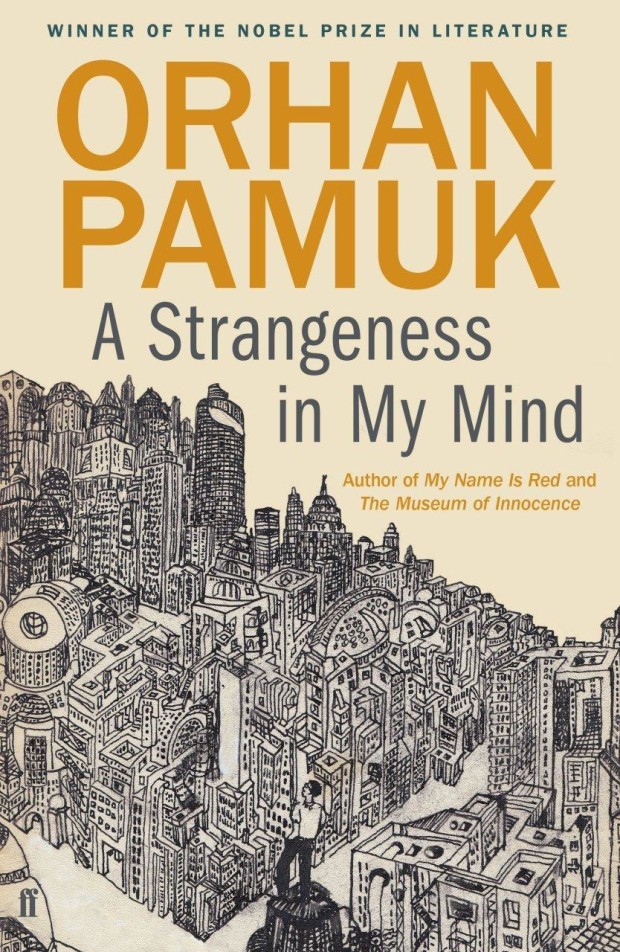You have no items in your cart. Want to get some nice things?
Go shopping
In The Naive and the Sentimental Novelist, Orhan Pamuk considers the purpose of novels and the tools with which they are created. The book – based on his Charles Eliot Norton lectures – draws on Forster’s Aspects of the Novel; indeed, Pamuk responds to Forster directly to make one of his chief points. Forster, he writes, “says in Aspects of the Novel that ‘the final test of a novel will be our affection for it’. The value of a novel, for me, lies in its power to provoke a search for a center which we can also naively project upon the world”. The readers’ pleasure is not paramount for Pamuk. Rather, it is the truthfulness of the novel that tells us its worth. “To simplify,” he continues, “the real measure of that value must be the novel’s power to evoke the sense that life is indeed exactly like this”.
The sense in fiction that “life is indeed exactly like this” is framed in slightly different terms by Kafka, who wrote in a letter of 1903 that “[s]ome books seem like a key to unfamiliar rooms in one’s own castle”. And yet The Trial is not, as Alan Bennett observes, “the kind of book one looks up from and says, ‘But it’s my story!'” Few readers “in our cosy little island,” Bennett writes, “are likely to be arrested without charge or expect to wake up and find the police in the room, and our experience of bureaucracy comes not from the Gestapo so much as from the Gas Board”, leading us to question what it is about The Trial that resonates with us.
A similar question might be asked of Pamuk’s A Strangeness in My Mind: “Being the Adventures and Dreams of Mevlut Karataş, a Seller of Boza, and of His Friends, and Also a Portrait of Life in Istanbul Between 1969 and 2012 from Many Different Points of View”. A wide-ranging cast of characters introduce us to Istanbul, which shifts and expands throughout the book. Aware of the foreignness of this setting for readers from “our cosy little island” and beyond, Pamuk punctuates the narrative with explanatory asides.”‘[P]erhaps I should explain for foreign readers who’ve never heard of it before… that boza is a traditional Asian beverage made of fermented wheat… This story is already full of strange things, and I wouldn’t want people to think it entirely peculiar,” he explains at the start.
Such comments – of which there are several – give the narrative a curious self-consciousness. “Had my readers actually met Mevlut, as I have, they would… know that I am not exaggerating for effect,” we learn on the first page. “In fact,” Pamuk continues, “let me take this opportunity to point out that there are no exaggerations anywhere in this book, which is based entirely on a true story; I will narrate some strange events… and limit my part to ordering them in such a fashion as to allow my readers to follow and understand them more easily.” The familiarity with which Pamuk addresses his readers has the feel of those authorial intrusions in nineteenth century fiction, intrusions designed not to shatter but to supplement the illusion of veracity (so Eliot famously observes in Adam Bede that “[w]ith a single drop of ink for a mirror, the Egyptian sorcerer undertakes to reveal to any chance comer far-reaching visions of the past. This is what I undertake to do for you, reader”).
Pamuk, like Eliot, insists on the truth of the events we encounter, impressing it on us through complex genealogies at the start of the book and a chronology of events, both real and unreal, at its close (“NOVEMBER 1982 The results of a referendum back the 1982 Constitution, and the leader of the 1980 coup, Kenan Evren, becomes president of the Republic. APRIL 1983 Mevlut and Rayiha’s first daughter, Fatma, is born.”). But this framework doesn’t have the effect of convincing Pamuk’s readers of the novel’s truthfulness; rather, it underscores its fiction. Pamuk is aware of this, of course. He wrote that he intended his novel The Museum of Innocence “to be perceived as a work of fiction, as a product of the imagination – yet I also wanted readers to assume that the main characters and the story were true”. We find this kind of doubled experience, the reader’s simultaneous absorption and self-awareness, in the work of the postmodernists: Calvino’s If on a Winter’s Night a Traveler takes this doubling to its extreme.
This is an interesting approach for a writer whose measure of the value of a novel is its “power to evoke the sense that life is indeed exactly like this”. How, as readers, are we to know what “this” is that “life is indeed exactly like”, when “this” is communicated to us in such a layered and self-conscious way? What’s more, the blurring of fiction and reality by the narrative voice is taken up in the plot itself; for the characters as well as the readers truth is confused with lies, as epitomised in the central love story in which a misinformed Mevlut writes love letters to Rayiha, thinking he is writing to her younger sister, Samiha. Mevlut struggles to reconcile this confusion with his faith: “First he would invoke the notion of intent in Islam. He would then ask the Holy Guide to explain the subtle distinction between a person’s private and public intentions… ‘Intentions come in two forms,’ [the Holy Guide] said: ‘THAT WHICH OUR HEART INTENDS and THAT WHICH OUR WORDS INTEND.'” The epigraph to Part 5 is a quotation from Ibn Zerhani – “Every word in Heaven is a reflection of the heart’s intent” – which echoes the novel’s central questions of intention and veracity. This quotation intrigues me: I can’t find any trace of an Ibn Zerhani elsewhere, although he is referenced again by Pamuk in The Black Book. Robert Irwin, reviewing The Black Book in 1995, is “sure that… Ibn Zerhani [is] made up”.
Beyond all the cleverness is a straightforward bildungsroman; to return to Forster’s measure of a good novel, there is much to inspire our “affection” as well as to challenge us. We find ourselves caring about the fortunes of this assembly of characters, drawn in by the detail of Pamuk’s descriptions (translated from the Turkish by Ekin Oklap). And yet, despite the engaging narrative, our likeable protagonist and the care with which Pamuk attends his readers (“Now that our story has again reached the night of Wednesday, 30 March 1994, I would advise my readers to reacquaint themselves with part 2 of our novel”), one can’t help but leave A Strangeness in My Mind feeling a little disconcerted.
A Strangeness in My Mind is published by Faber and Faber.

About Xenobe Purvis
Xenobe is a writer and a literary research assistant. Her work has appeared in the Telegraph, City AM, Asian Art Newspaper and So it Goes Magazine, and her first novel is represented by Peters Fraser & Dunlop. She and her sister curate an art and culture website with a Japanese focus: nomikomu.com.




